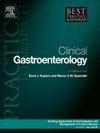内镜检查后上消化道癌症:新数据和改善早期检测的机会
IF 3.2
3区 医学
Q2 GASTROENTEROLOGY & HEPATOLOGY
Best Practice & Research Clinical Gastroenterology
Pub Date : 2025-03-01
DOI:10.1016/j.bpg.2025.102003
引用次数: 0
摘要
上消化道肿瘤的总体预后仍然很差。早期诊断是避免发病和提高长期生存率的关键。虽然胃镜检查是金标准诊断检查,但癌前或恶性异常可能被忽视或受到不理想的管理,导致诊断延误和患者伤害。在“癌症阴性”胃镜检查后症状持续的患者可能会得到错误的保证。上消化道恶性肿瘤在三年内诊断为“癌症阴性”,指数胃镜检查定义为内镜检查后上消化道癌症(PEUGIC)。它们非常普遍,占国际上上消化道恶性肿瘤的11%。诊断前的内窥镜检查异常非常常见,包括癌前病变和癌症相关病变。根本原因分析表明内镜检查质量、决策和管理存在缺陷。这表明可以避免PEUGIC病例,并且至关重要的是,有机会提高内窥镜检查质量和结果。这篇叙述性综述总结了PEUGIC的流行病学、表现、背景和根本原因,并为临床实践和研究提出建议。本文章由计算机程序翻译,如有差异,请以英文原文为准。
Post-endoscopy upper gastrointestinal cancer: Emerging data and opportunities to improve early detection
The overall prognosis of upper gastrointestinal cancer remains very poor. Early diagnosis is key to avoid morbidity and improve long-term survival. While gastroscopy is the gold standard diagnostic test, premalignant or malignant abnormalities may be overlooked or subject to sub-optimal management, leading to delayed diagnosis and patient harm. Patients with persistent symptoms after a “cancer-negative” gastroscopy may be given false reassurance. Upper gastrointestinal malignancies diagnosed within three years of a “cancer-negative”, index gastroscopy are defined as post-endoscopy upper gastrointestinal cancers (PEUGIC). They are surprisingly common, accounting for 11 % of upper gastrointestinal malignancies internationally. Abnormalities in the endoscopy preceding diagnosis are very common, and include premalignant findings and cancer-related lesions. Root cause analysis suggests deficiencies in endoscopy quality, decision-making and administration. This suggests avoidable PEUGIC cases, and crucially, an opportunity to improve endoscopy quality and outcomes. This narrative review summarises the epidemiology, presentation, contexts and root causes of PEUGIC and makes recommendations for clinical practice and research.
求助全文
通过发布文献求助,成功后即可免费获取论文全文。
去求助
来源期刊
CiteScore
5.50
自引率
0.00%
发文量
23
审稿时长
69 days
期刊介绍:
Each topic-based issue of Best Practice & Research Clinical Gastroenterology will provide a comprehensive review of current clinical practice and thinking within the specialty of gastroenterology.

 求助内容:
求助内容: 应助结果提醒方式:
应助结果提醒方式:


